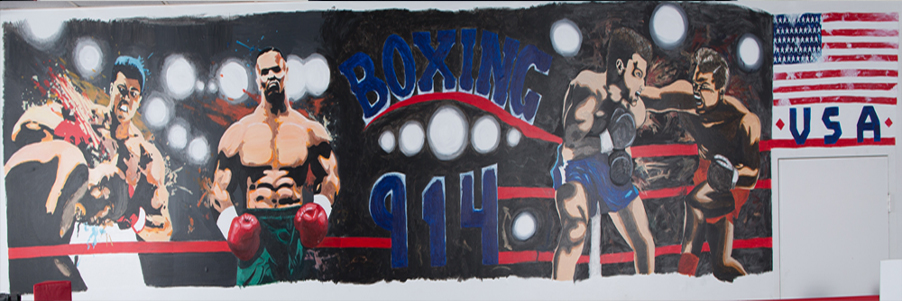Many of the boxers whose names we know today got their start in Olympic boxing. Muhammad Ali, Sugar Ray Leonard, and Oscar De La Hoya, to name a few, were all Olympic competitors before they became household names in the word of professional boxing. What most people do not realize, however, is that there are serious differences between how Olympic (amateur) boxing is conducted and how professional boxing is conducted. The rules, the boxers themselves, the length of the bouts, and the atmosphere surrounding both sports are fairly different. Here are the biggest differences between professional and amateur (or Olympic) boxing.
1. Boxing skill. Unlike prizefighters, very few amateur boxers make any money. In the world of boxing, how much money you make translates directly into how much time you get to spend training, which again, translates into how much skill you develop. You can say that amateur boxers and professional boxers are essentially competing in two different sports.
2. Gear. One of the most glaring differences between amateur boxing and professional boxing is the kind of gear that each fighter wears. In amateur boxing, aside from the gloves and mouth guard that professionals wear, boxers also wear head gear. Not like the head gear you might have had to wear as a teenager as a part of a orthodontics, but a sort of soft helmet that protects the eyes, forehead, cheeks, and ears. This helps to prevent trauma to the head, eyes, and ears, which are the most common injuries in professional boxing. While head gear will not necessarily completely protect an amateur boxer from a devastating injury, it does prevent many of the most serious injuries from happening most of the time.
3. The size of the rings. In professional boxing, there is actually no standard for the size of the ring. In professional bouts, this means that you could be fighting in a tiny ring, or in a huge ring. In the amateur circuits, however, ring sizes are very standardized. Rings must have a minimum size of sixteen feet square and a maximum size of twenty feet square. While professional rings are usually around the same size as amateur ones, they do not have to be.
4. The number of rounds in a bout. The number of rounds in a bout. Professional fights are going to be much longer than amateur fights. While both have a standard of three minute rounds, professionals can go from as few as four rounds to having as many as twelve rounds. On the other hand, in Olympic boxing, there are always three, three- minute rounds for males and four two-minutes for female fighters.
5. How the bouts are scored.
While the concept of landing hits and avoiding being hit is the same for both amateurs and professionals, the truth is that how these two types of boxing are scored is very different and really constitutes the biggest difference between amateur and professional boxing.
In amateur boxing, a boxer wins by having the most legal punches, usually scored by an electronic counter. In amateur boxing, a boxer can lose the majority of his or her rounds, but if he really dominates one single round, he can still win. There are more stringent rules for what constitutes a legal or acceptable hit, especially at the actual Olympics. The knuckle part of a closed glove must land on the front or side of the body or head (always above the belt) in order to count. There are no additional points awarded for knockouts, aggression, or getting your opponent to stagger or wobble. In short, the cleaner your hits are and the more of them you land makes you the winner in amateur boxing.
In professional boxing, things are very different. Instead of five judges that decide whether or not a hit was clean or legal, there are only three, and they use a ten-point system to determine the winner of each round. The fighter with the most points at the end of the bout is the winner. This means that if a boxer dominates the first five rounds of a six round bout and earns more points than the opponent can make up in the subsequent round, the match might as well be over.
Just as in amateur boxing, all hits must land on the front or side, above the opponent’s belt. Unlike amateur boxing, however, fighters do not win just for landing the most clean hits. Instead, they are scored using four criteria, based on the judge’s own opinions. These are Defense, Effective Aggression, Clean and Hard punching, and Ring Generalship.
Defense means that the fighter effectively avoided being hit by his opponent. This is a big part of boxing and the bobbing, weaving, dodging, and blocking that are involved are a big part of a professional boxer’s technique.
Effective Aggression is how active the boxer is in the bout. Are they the one making the fight happen or are they always on the defensive?
Clean and hard punching simply means how cleanly a blow lands.
Professionals get bonus points for knocking their opponent down, making them stagger or wobble, or landing very hard punches.
The last criteria, ring generalship, has to do with which fighter takes control of the ring and sets the tempo of the fight. Which fighter makes the bout their fight?
These criteria and the fact that it is evaluated by three people, means that scoring in professional boxing can be subjective. It also means that many audience members might disagree with who is selected as the winner of a professional fight. There may even be a difference of opinion between judges as to whose punches were cleaner, who was more in control of the ring, and who directed the fight. These kinds of disagreements are unlikely to happen in Olympic boxing simply because the scoring system is a tally, rather than subjective criteria.





